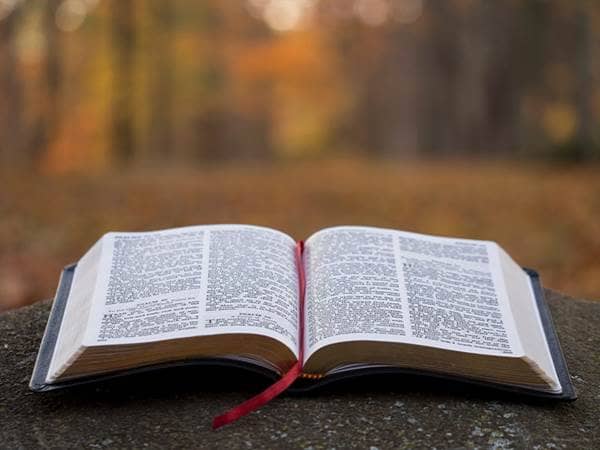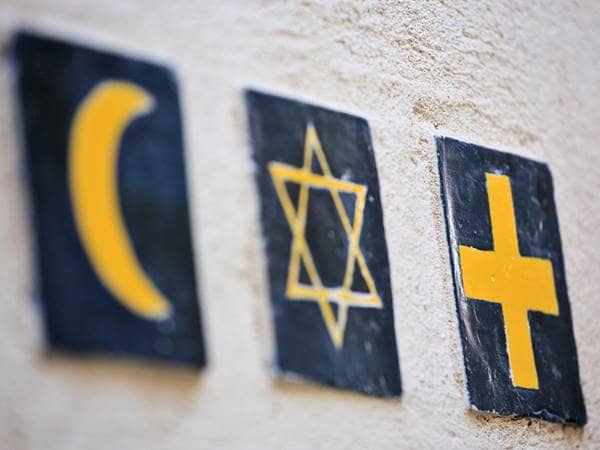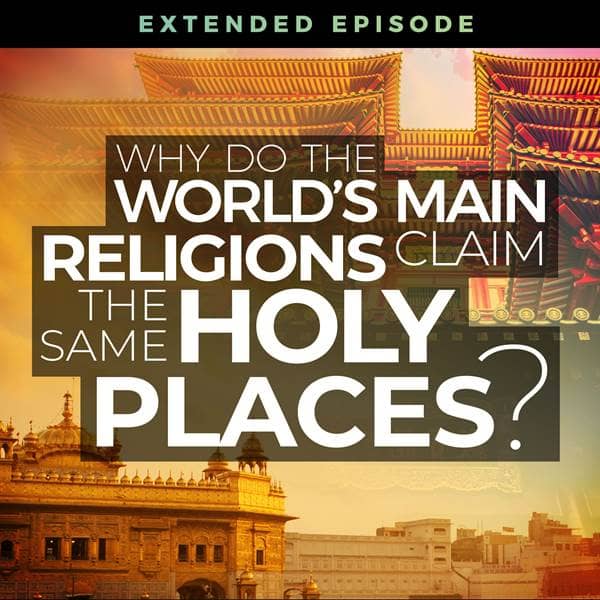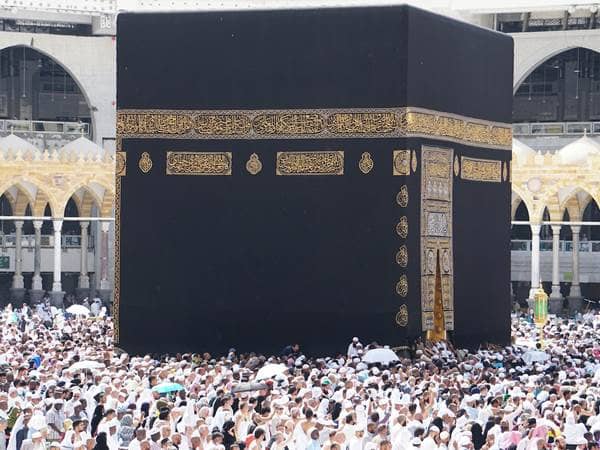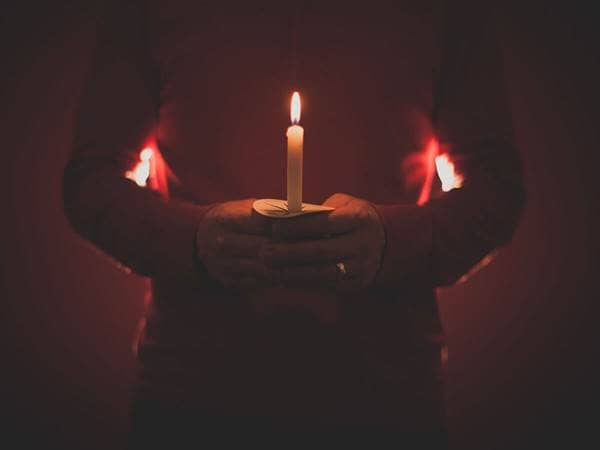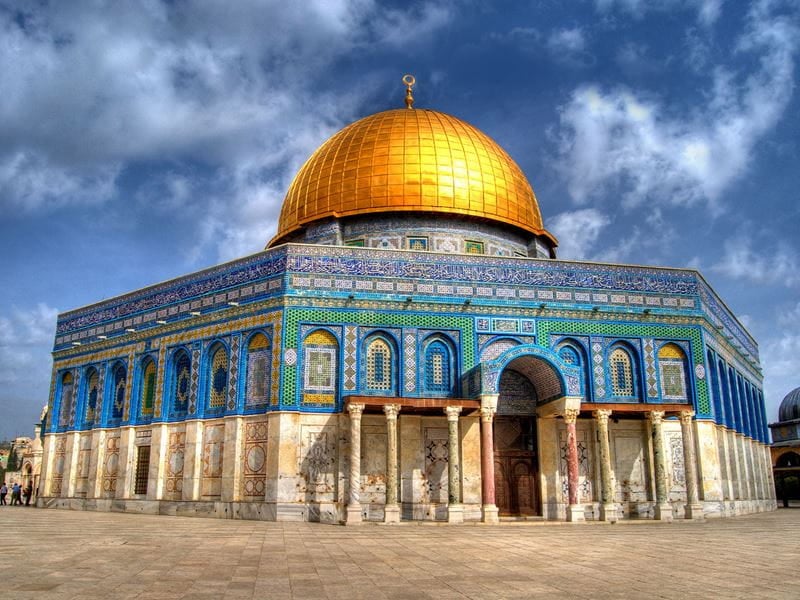
- Trending:
- Olympics
- |
- Forgiveness
- |
- Resurrection
- |
- Joy
- |
- Afterlife
- |
- Trump
The 100 Most Holy Places On Earth
Temple Mount


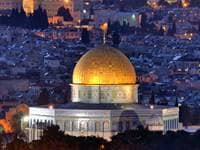
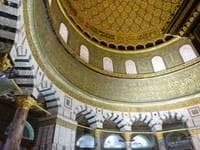
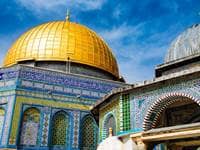
Also Known As:
Temple Mount, Dome of the Rock, al-Haram al-Sharif, The Noble Sanctuary, Qubbat aṣ-Ṣakhra, Al-Aqsa Compound.
Associated Faiths:
Islam, Judaism and Christianity
The famed Jerusalem-based biblical scholar, Dr. Jerome Murphy-O’Connor, noted, “The site had a long history as a holy place before the day in AD 638 when Omar, [the Islamic] Commander of the Faithful, took possession of the city.” For millennia prior to the arrival of Islam, the Temple Mount functioned as a sacred site for Jews and Christians because Solomon’s Temple, Zerubbabel’s Temple, and Herod's Temple all sat on that same site. Since all three of those past edifices are sacred to Jews and Christians—and since the “Holy of Holies” of the ancient temple sat somewhere atop the Temple Mount—this particular location remains an important place in Jewish and Christian belief, even though today it is both a Muslim site, and the location of the Dome of the Rock—one of Islam’s most holy sites.
Today, Muslims make pilgrimages to this site, as do Christians (from various denominations). While Jews worship at the Western Retaining wall (that supports the western side of the Temple Mount), most would not visit the top of the Mount because somewhere atop it would be the location of the former Holy of Holies and, for any lay person to traverse that spot would be both against God’s command, and also sacrilegious. Nonetheless, the site—as the former location of three past Jewish Temples—still retains its status as “sacral” to Orthodox Jews (who tend to feel that the fact that only Muslims are allowed to occupy the site or worship on the site is a defilement of their former sacred space).
Accessibility:
While the Dome of the Rock is only open to Muslims, the grounds surrounding it are open to non-Muslims. Very modest dress is required. No shorts. Women must be fully covered down to their ankles. Head covers for women required. No religious jewelry should be visible, nor religious books (other than the Qur’an).
Annual visitors: 5,000,000
History
The Temple Mount (which is the site on which the Dome of the Rock now rests) is a coveted site. Jews see it as the former abode of Solomon’s temple, Zerubbabel’s temple, and later Herod’s temple—and also the location where the “founder” of their faith, Abraham, attempted to offer up to God his son Isaac. Christians see it as the site where their Messiah, Jesus, walked, taught, and worshiped. For Muslims, it is the site where Ibrahim attempted to sacrifice his son Ismael to Allah, and the very spot on which the Prophet Muhammed stood, prayed, and ultimately ascended into the presence of God. Perhaps no sacred site in the history of the world has had so much meaning to those of so many different traditions. This might explain why it has landed atop the list of our 100 most sacred sites! While the Temple Mount has meaning to more people than just about any other sacred site, it has also been the source of so much contention as a consequence of its seemingly universal importance among those of the Abrahamic traditions.
In 70 CE, the Romans destroyed the last of the Jewish temples to occupy the spot—that being Herod’s revamp and expansion of Zerubbabel’s temple. In the fourth century, a small Christian church was built over the spot where the Jewish temple had once stood. From 688-691 CE, Muslims constructed the Dome of the Rock on that same spot, in addition to the Al-Aqsa Mosque. During the first Crusade (AD 1099), some 10,000 people were beheaded on the site, the mosque was torn down, and a new Christian church (serving as the headquarters for the Knights Templar) was built thereon. In 1187 CE, Saladin defeated the Crusaders, and the Christian church resting on the site was converted into an Islamic Mosque. Today, Muslims control the “Noble Sanctuary” or “Temple Mount.” The “Western Wall” (or “Wailing Wall,” as it is sometimes called) down below is merely the retaining wall of the old temple mount, but it is not actually part of either of the ancient temples that once occupied the site.
Among the many important features of the Temple Mount today would be the Dome of the Rock, with its iconic golden dome, its beautiful Arabic calligraphic inscriptions of passages taken from the Qur’an (inscriptions which adorn the walls of both the exterior and interior of the edifice), and the very large stone at the center of the Dome’s interior, which has what some believe are the footprints of the Prophet Muhammed, and the handprints of the Angel Gabriel. It is worth nothing that there is a hole atop the rock, which is believed by some to have served as a manmade drain created (perhaps by Ibrahim/Abraham) to drain off the blood resulting from sacrifices made atop the rock. Thus, the rock is perceived by many as having once functioned as an ancient altar of sacrifice—perhaps first by Ibrahim/Abraham, but certainly by others after his time. Thus, again, it has a place in each of the three Abrahamic traditions.
As of 1967, non-Muslims have had limited access to the mount on which the Dome of the Rock sits. While allowed on the temple mount itself, they are not allowed to pray there, bring scriptures or prayer books (from their religious tradition) to the site, nor are they allowed to wear religious jewelry or apparel while visiting. Prior to the year 2000, non-Muslims had been allowed to enter the Dome of the Rock, if done respectfully. With the outbreak of the 2000 Intifada, only Muslims have been allowed to enter the Dome or the Al-Aqsa Mosque (just to the south).
Of course, the Temple Mount no longer contains a Judeo-Christian Temple. Indeed, there aren’t really even remnants of the past temples visible today. Additionally, contrary to popular opinion, the Dome of the Rock (resting now where the temples once did) is not technically a mosque. Yes, it is a shrine to which Muslims flock to worship their God and to honor their Prophet. However, even though there is a small room beneath the rock itself in which some gather to pray, the building was not built as a mosque, is not used as a mosque, and has never formally functioned as one. Indeed, its interior design makes it dysfunctional as a traditional mosque.
Religious Significance
Pretty much every religion has its “sacred spaces,” whether those are the birthplaces of their founders, the location of major or important revelations, or landmarks reminding practitioners of their shared religious experience. Judaism, Christianity, and Islam are no different in this regard. The Temple Mount is sacred in all three Abrahamic traditions and the Dome of the Rock (which currently rests atop it) is the third most holy site in Islam—Mecca (the location of the Prophet Muhammed’s birth) being the most sacred, Medina (the place of the Prophet’s burial) being the second, and Jerusalem (the location of the Prophet’s ascension into Paradise) being the third.
For Jews, this place is sacred because of its past temples and how central they were to the functionality of the faith from very ancient times all the way down until the last of the Jewish Temples was destroyed in 70CE. For Christians—who perceive themselves as the “inheritors” of the “chosenness” they believe Jews forfeited by rejecting Jesus—the Mount is not only the site of much of biblical history, but also the location of some of the most important events in the life of Jesus, whom they worship. Thus, for these two-thirds of Abraham’s “descendants,” this is one of the most revered of sites. It is the site of visions, revelations, sacrifices, holy edifices, and even the very place at which “God incarnate” is said to have walked.
As to the “other third” of Abraham’s posterity—those of the Islamic faith—not only is the Temple Mount holy, but so is the Dome of the Rock which stands there. The “rock” housed by the Dome is believed by Muslims to be where Ibrahim (or Abraham) very nearly offered the life of his son Ismael to Allah, but it is also the site at which Muslims believe the Prophet Muhammed met with all of the ancient prophets (Adam, Ibrahim, Moses, Jesus, etc.), leading them in prayer prior to his ascension (from that rock) into the presence of God—where he received his call as Allah’s last prophetic messenger. According to Islamic belief, the indentations on the top of the rock (which look like footprints) are indeed the very footprints of the Prophet Muhammed, which he left as he pushed off of the rock on his way into God’s presence. In fact, tradition has it that the rock actually tried to follow the Prophet heavenward, and the angel Gabriel had to hold it down. Thus, there are prints on the rock that look akin to handprints—and these are said to be the prints of Gabriel, left by him when he pulled back on the rock so that it would not ascend. The concave underside of the rock, and its convex upper side, are said by some to be the result of the rock’s effort to fly heavenward (with the Prophet)—creating its unique domed shape. A shrine inside of the Dome of the Rock is said to contain a hair from the head of the Prophet Muhammed. It is a reminder to the devout that, on the day of Judgement, it is believed that a hair will be stretched from the Dome of the Rock to the Mount of Olives. The deceased will be required, at that time, to walk across the stretched hair—like a tightrope walker traversing a thin cable. The saved will make it across without difficulty, making their way into Paradise, but sinners will fall off the hair and land in perdition.
Knowing that on the site of the massive bolder (housed by the Dome of the Rock) one of God’s chosen messengers was willing to give the life of his son; and knowing that on that same site God’s greatest Islamic messenger (the Prophet Muhammed) led other spiritual giants in prayer; and with the understanding that Muhammed and the angel Gabriel have left their very foot and handprints upon the rock; and with the belief that this same site will play a role in the coming judgement day; what pilgrim wouldn’t see the importance of this sacred site? What Muslim visitor would not see reason to perceive this space as hallowed? Likewise, knowing that the God of Israel, the God of the Christians and the Jews, appeared to ancient prophets on that mount—in the Houses (or Temples) He required His people to build for Him—instantly sanctifies this space, and makes Jewish and Christian reverence for the Mount understandable as well.
While not the most important of Jewish, Christian, or Islamic holy places, the Temple Mount is one of the most significant—and the multiple sacred events said to have happened at this local make this hallowed spot an attraction for all “descendants” of Abraham—and for quite a few outside of the three Abrahamic traditions.


